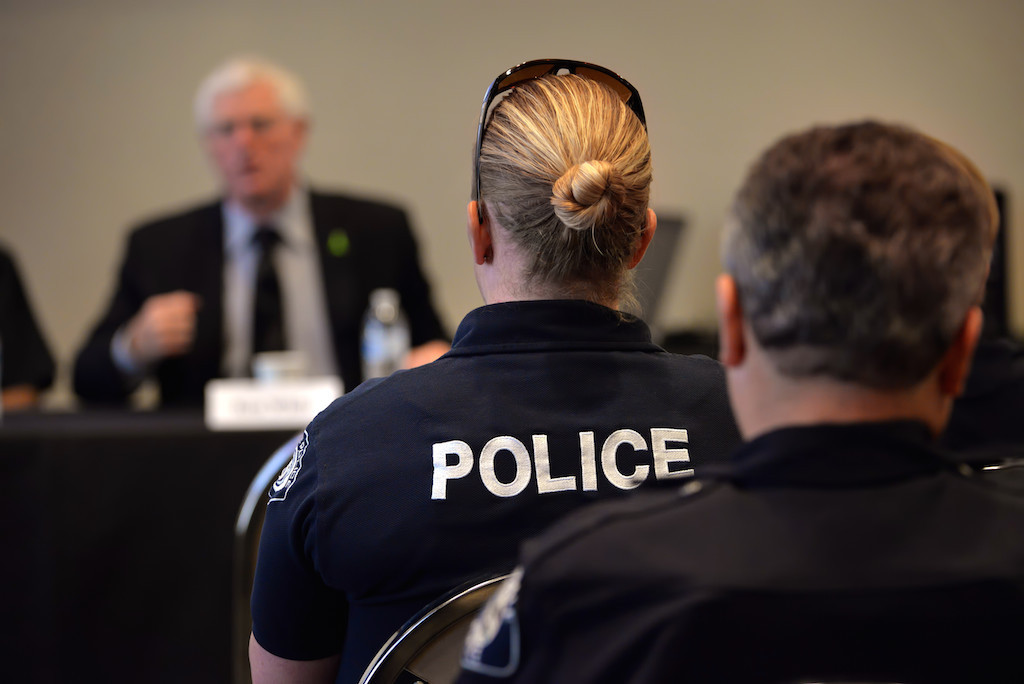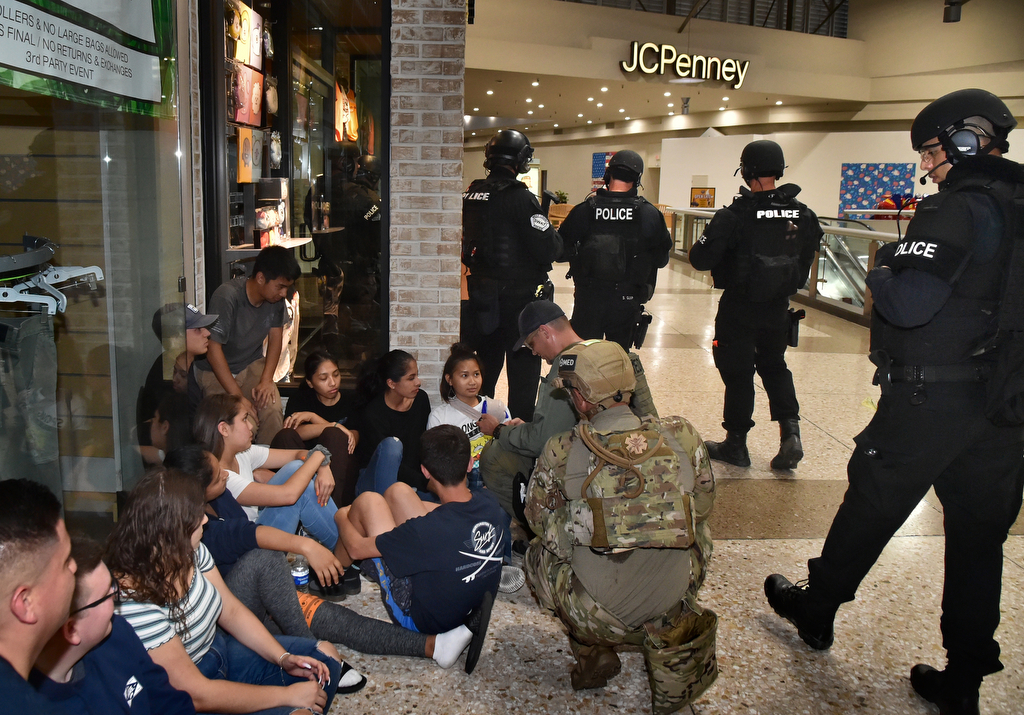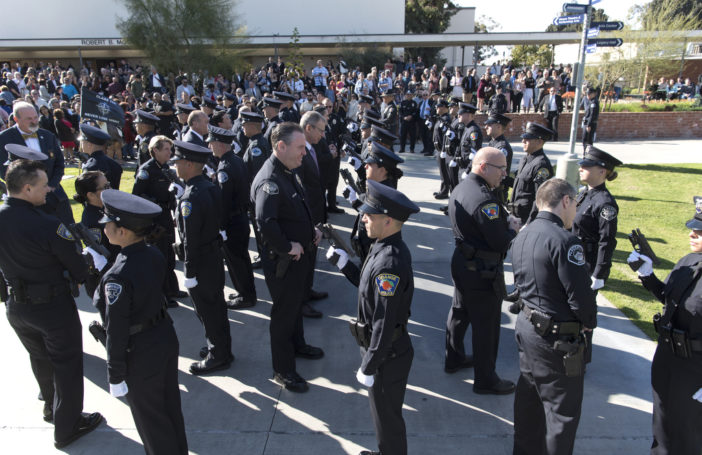Over the past few years critics have pointed to the need for more training as a solution to the shortcomings of law enforcement.
I would agree training is a necessity and should be an ongoing priority at every police agency, but getting it done is not simple.
Questions on what training should be implemented and in what priority have been discussed both internally within law enforcement departments and with the communities they serve. Frankly, the task can be daunting. Department priorities and community expectations have to be taken into consideration. Curriculum has to be developed and trainers have to be trained. And then there are the costs associated with training.
What people don’t take into consideration is that every time a police officer is training someone has to take their place or their job isn’t getting done. For even the smallest departments that can require up to thousands of hours a year.
I’ve compiled a partial list of what can be considered training priorities by police departments and the community, along with the number of hours that might be required. As you can see, law enforcement leaders must take many things into consideration when planning these much-needed trainings. This is not a simple or easy task to accomplish.
De-escalation Training
Officers confronted with violent and non-compliant subjects have been criticized in their response when things go terribly wrong, especially when deadly force is used. The goal of de-escalation training is to provide officers with the skills to slow down, create space, and rely on communication to defuse volatile encounters.
Let’s say that 24 hours of training would suffice for every officer in a police department.
Crisis Intervention and Response
While not quite the same as de-escalation, crisis intervention training works to reduce injury or death during police interactions with people suffering from mental illness or who are experiencing a mental health crisis. This seems like a worthy effort and is critically needed at a time when these encounters seem to occur with some frequency.
That would be another 24 to 40 hours of training.

Law enforcement officials from various agencies attend a movie and panel discussion on mental health at the Buena Park Community Center. File photo by Steven Georges/Behind the Badge
Police Response to Homelessness
Not a single city in the country isn’t dealing with issues related to homelessness and homeless behavior. Police departments have assumed the role of the lead government agency on these issues. Homelessness impacts the community’s sense of well-being, safety, and security. In this situation, police are often caught in the middle. Law enforcement is criticized if they step back and allow social service and non-profits to deal with the problem. If they take enforcement measures to set boundaries and they are taken to task for being insensitive and coming on too strong. If we ignore the violence and drug-related issues the problems can quickly go out of control.
At least 24 hours of training would be helpful in providing tools for the officer’s toolbox.
Racial Sensitivity, Bias and Cultural Competency
Police officers throughout the country have been criticized for a lack of understanding how racial bias can affect how they enforce the law and respond to calls for service. Implicit bias training is an effort to help officers understand how stereotypes and cultural biases can and do impact how we respond to people.
Recent historical precedent shows how police departments were used to enforce racist and unfair laws, so naturally there is distrust and suspicion. There is real debate on the effectiveness of the training and if it leads to fairer policing. Training is, however, better than doing nothing.
Most of the classes being offered are 8 hours in length and usually involve all department employees.
Procedural Justice
Procedural justice speaks to the idea of fairness and transparency, such as how police departments interact with their communities and how they implement everything from enforcement strategies to personal contacts with the public. A great deal of this training is directed at police leadership, middle managers, and supervisors. In reality, all offices could benefit from this kind of training.
The training is usually one or two days.
Mobile Field Force
2020 was a year of demonstrations, protests, and full-on riots across the country. The critiques of police responses to these events are universal regarding the lack of training and preparation. These rebukes are not just for the officers on the line but in the command, as well as control of the situations by police commanders. Granted, this is not something police departments do every day, but is something they have to be prepared to handle.
Training of 24 hours for officers and 40 hours for police commanders could go a long way toward improving the police response.

Police officers in riot gear gather, with OC Sheriff Deputies behind them, across the street from Anaheim City Hall as protesters gather in the area.
File photo by Steven Georges/Behind the Badge
Duty to Intervene
Something that has come up rather recently has been the failure of back-up officers to intervene when they see another officer taking actions that are escalating a situation or are illegal. What can and should an officer do when they see something like this occurring? It’s been a standard oral board question for new hires for years. New hires are asked, “What do you do when you are working with an officer who is breaking the law?”
There is a move to make “duty to intervene” a legal requirement for officers. Most departments already have this as a matter of policy. If this becomes the law, departments need to better train officers in how to handle these situations.
That would be another 4- to 8-hour block.
Response to Human Trafficking
The public response to the crisis of human trafficking has been huge. Across the country, many jurisdictions have created task forces and collaboratives to deal with the issue. Young women and men being coerced into sex trafficking is happening in just about every city in America. In order to respond effectively, police officers need training to identify the signs and respond in a manner that understands the suspects in these cases are, in fact, victims.
About 8 hours of training would be helpful for every officer in the country.

Anaheim Police Chief Jorge Cisneros speaks about the state of human trafficking in Orange County. File photo by Steven Georges/Behind the Badge
Active Shooter Training
Recent events continue to show the need for first responders to be trained in how to respond to events where an individual is actively engaged in killing or attempting to kill people in confined and populated areas. This can happen in a school, shopping center, or any area where the public gathers. While rare, the need for officers to be prepared for these dangerous and horrific calls is the reality of our times.
Ideally, 8 hours every year might adequately prepare an officer in the field to respond. Triple that for an officer assigned to a SWAT unit.

West County SWAT team medics tend to volunteers playing the part of victims as others stand watch during an active shooter drill at the Westminster Mall.
File photo by Steven Georges/Behind the Badge
As you can see, a lot of training needs to be done, in addition to the significant amount of ongoing training that still has to occur on a regular basis.
Arrest and control techniques, firearms and range training, and emergency vehicle driving are all skills that have to be continually refreshed. It comes as no surprise these are some of the areas where police departments have the most civil exposure. Add to that regular legal updates, since the laws are constantly changing due to case decisions and legislative action. Add specialty investigative training for detectives and the hours continue to add up.
Regular training is also needed on personal well-being, fitness and stress management. Police physical and mental issues are a real problem and are worthy of a department’s attention.
Let’s say you are the police chief of your city.
How do you prioritize the trainings on this list? Especially when, due to the pandemic, your department budget has been reduced and there may be public outcry to defund the police.
Let’s not forget you have to make sure officers are still responding to calls and investigating cases.
What is most important to get done first and how long is the training going to take? Is it going to be months, weeks or years? It can be a daunting and challenging task.
Training is needed, is necessary, and is beneficial for any law enforcement agency.
The decisions on how it gets done and how soon are not easy to solve. Public expectations need to be realistic: all this training isn’t going to happen overnight.
 Behind the Badge
Behind the Badge



